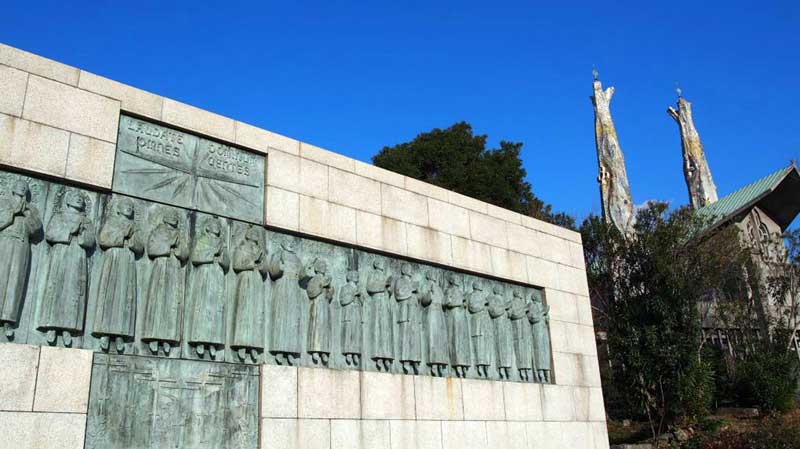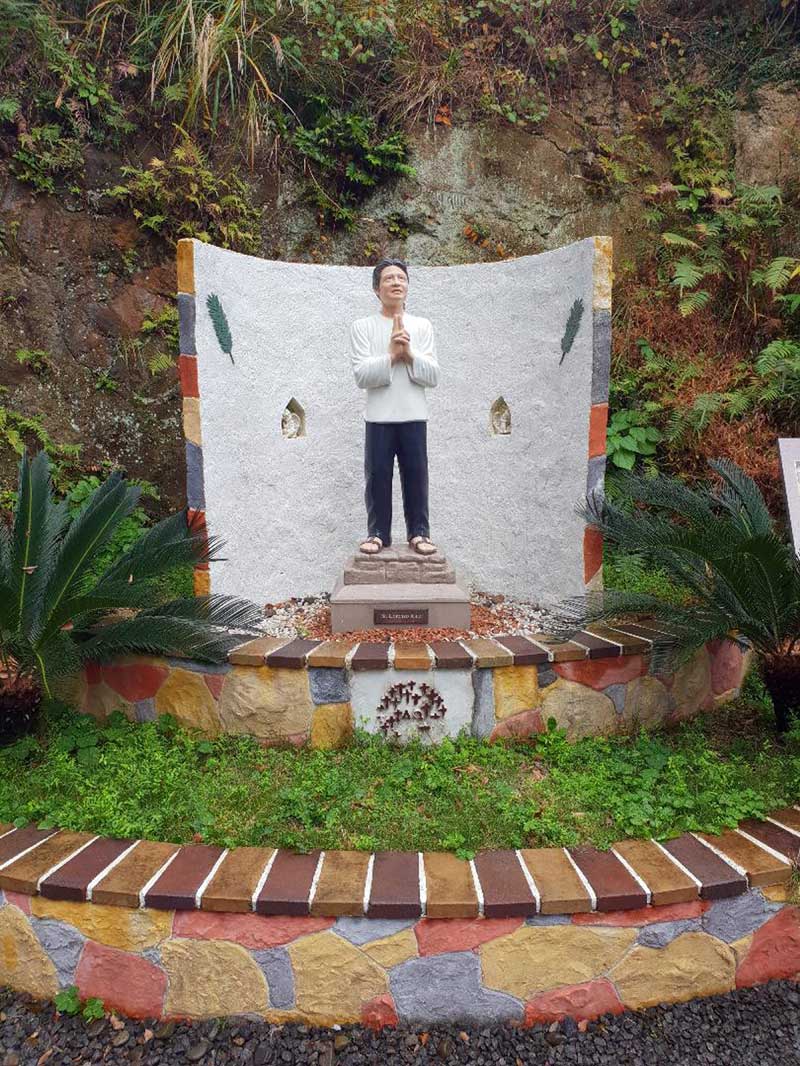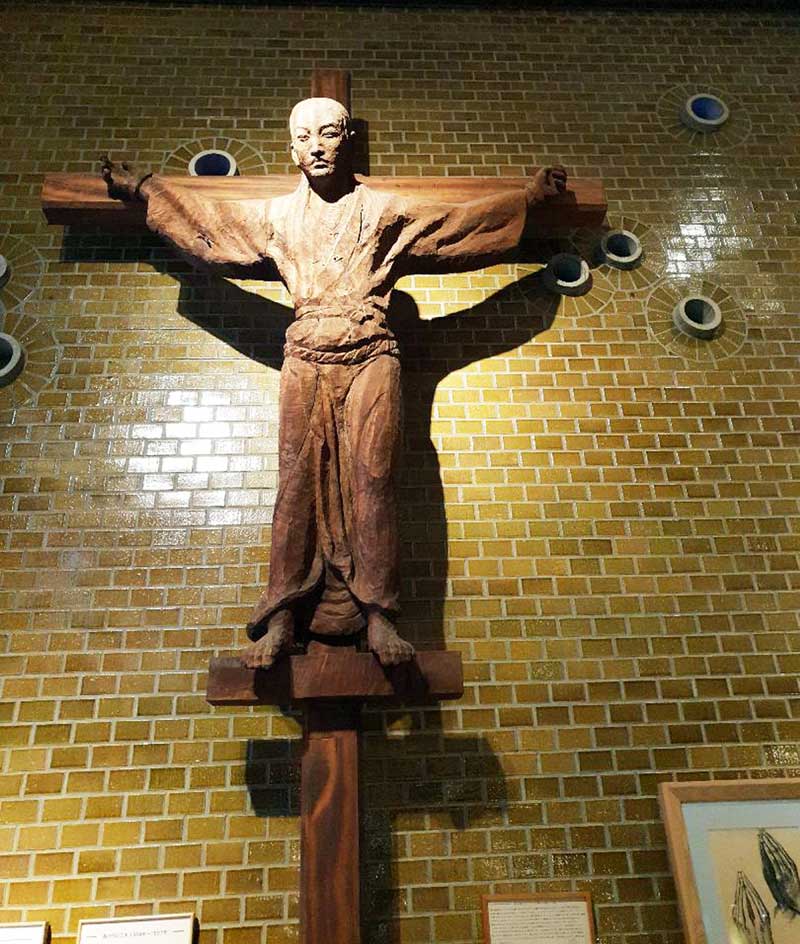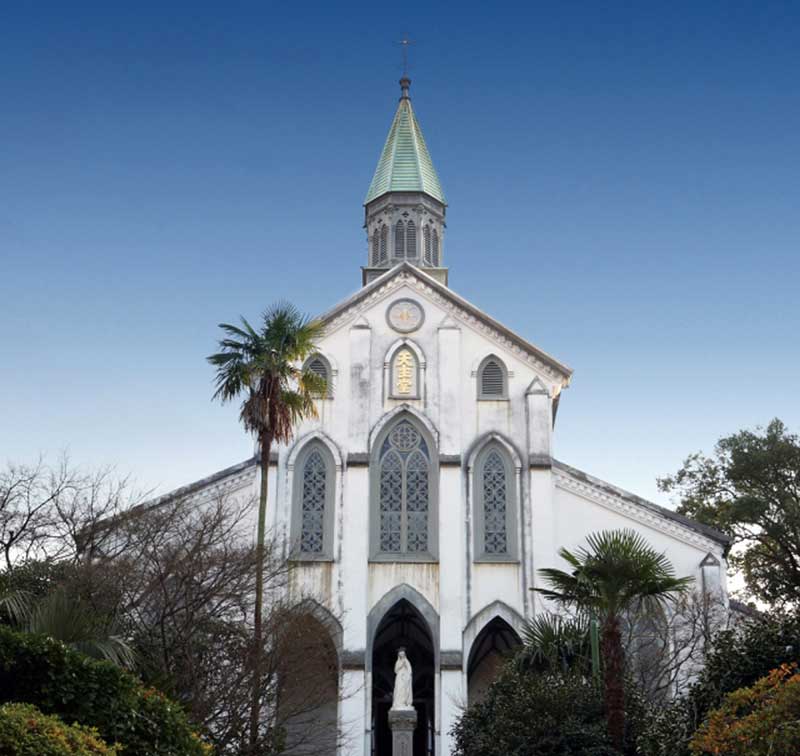A pilgrim in Nagasaki

Nagasaki was primarily known for the destruction it suffered during the final stages of World War II. Today it is thought to be Japan’s most beautiful city. It rises above its U-shaped harbor with terraced slopes that are dotted with typical Japanese houses. The city welcomes visitors with quaint streets and a vibrant culture.

This monument pays tribute to the 26 Catholics who were executed by crucifixion.
In recent years Nagasaki has emerged as a pilgrimage destination joining the worldwide boom in spiritual travels. Among the popular sites are the following:

At Nakamachi Church gardens are statues of martyrs. San Lorenzo Ruiz is in the middle with his hand raised.
The Twenty Six Martyrs Memorial St. Philip Church. In the late 1500s the national ruler Hideyoshi, suspicious of foreign influence, and to gain complete control over Kyushu, ordered to expel and punish all priests from the country. Twenty-six priests were imprisoned then later made to march through the snow to Nagasaki so that their execution may serve as a deterrent to the growing Christian population. Hung up on 26 crosses with ropes and chains, the Christians were pierced to death on Nishizaka Hill. Today this spot has been chosen as a Japanese National Sanctuary. Pope St. John Paul II visited this site on Feb. 26, 1981 as a pilgrim for the martyrs. In the sacristy is a well-preserved reliquary with bones of three of the 26 martyrs, the Jesuits Paul Miki, Jacob Kisai and John Goto.

A statue of Saint Lorenzo Ruiz donated by Cardinal Jaime Sin
Oura Catholic Church was built by a French priest to dedicate prayers to the 26 saints-martyrs on Nishizaka Hill. The church, constructed in the gothic style, is Japan’s oldest existing wooden church. It became famous worldwide as the church that discovered the “hidden followers” who had survived the religious persecution. In 2016, it was recognized by the Vatican as a Minor Basilica for its historical value.

The cross of Saint Paul Miki in the Museum of the 26 Martyrs
The Nakamachi Church was built in 1896 as a dedication to the Blessed Virgin Mary and to commemorate the anniversary deaths of the 26 martyrs. However, the church was destroyed by the atomic bomb in 1945 but rebuilt by parishioners in 1951.Years later monuments to the 16 martyrs were constructed in the church gardens. Influential Cardinal Jaime Sin, who was instrumental in the defeat of the Marcos regime and in the installation of Corazon Aquino as president in 1986, attended the unveiling ceremony in recognition of the first Filipino saint, Lorenzo Ruiz.

Oura Cathedral is the oldest existing wooden church in Japan.
Before the end of the three-day pilgrimage, Hodo Nakamura, governor of Nagasaki Prefecture hosted an intimate dinner for his good friend Bobby Joseph who spearheaded the unforgettable journey. Also in attendance was deputy director general Masatsugu Iwata.




















